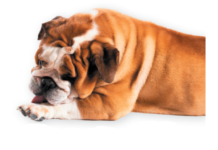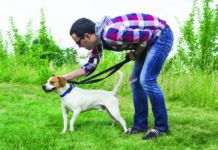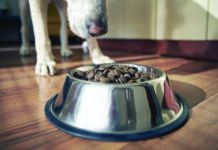Some Dogs, Like Some People, Bite Their Nails
While some dogs bite their nails as a reaction to an allergy or other medical condition (itchy skin can make a dog start playing with his feet), many do it for the same reason people do—they’re anxious.
The At-Home Lumps and Bumps Exam
If you find a new lump on your dog you should of course have a veterinarian check it out to play it safe. But know that the majority of lumps and bumps on your dog’s skin are benign. Even a significant number of lumps under your dog’s skin are benign. If a bump is found to be cancerous, that doesn’t mean your pet is going to die from it. That’s because most of the cancerous masses on a dog’s body are non-metastatic, meaning they won’t spread to distant sites in the body. Granted, they can invade healthy tissue locally and thereby become life-threatening. But they’re most often not fatal if they’re treated without delay. That’s why anything at least a centimeter in diameter (a quarter of an inch) should be brought to the doc-
tor’s attention.
Remodeling—or Building—a Home with Your Dog in Mind
You don’t have to watch more than a few episodes of House Hunters on HGTV to know that right up there on people’s wish lists—along with a double vanity in the primary bedroom and a showcase kitchen—is a big backyard for the dog. It’s often a non-negotiable, in fact. According to a survey conducted by the National Association of Realtors, one in three clients with a pet will refuse to make an offer on a house because it is not ideal for their animal. And more than 80 percent of people take animal-related considerations into account when purchasing their next home or remodeling their current one.
Why You Should Weigh Your Dog’s Food Rather Than Measure It in a Cup
Which one of these methods works well for making sure your dog gets the right amount of food to manage her weight?
Getting a deaf dog’s attention
Q: I have a 13-year-old dog who is deaf. She knows hand signals. My problem is getting her attention in the first place. How can I alert her to the fact that I am in the room and want to communicate with her?
Can a dog be autistic?
Q: I recently read an article that autism is not a diagnosis in dogs, but they can have behavior that seems autistic in nature. Can you elaborate on this? I have two dogs that I think may be “on the spectrum.” One has a fear of me counting coins. The other has his own issues. I love these boys so much, and they have given so much in return. I would just like to know of any information that might help me to understand their mental challenges.
By a Whisker
A dog’s whiskers play distinct roles in his safety and understanding of his world.
In Protecting Your Dog, You May Be “Muddying the Waters”
You dutifully apply a topical flea and tick preventative between your dog’s shoulder blades every month or have him wear a collar to repel those disease-carrying insects. But you also frequently take him to a pond to swim, which he loves so much. You follow doctor’s orders with the topical and wait two days before letting your pet go in the water so the medicine will remain on his skin, but still, some of it could wash off. And the more often you take him, the more medicine that’s going to end up in the water. It’s the same with a flea and tick collar. The more frequently your dog goes swimming, the less effective the collar is going to be. It turns out it’s not only a problem for the dog.
Download The Full March 2025 Issue PDF
- Can Dogs “Tell” Us What They Want? In English?
- Short Takes
- Love Stinks, and That’s Just How Dogs Like It!
- Yelling as a Dog Training Tool: It Doesn’t Work
- FDA Issues Warning on Canine Arthritis Drug
- When the Pupils Become Two Different Sizes
- Is It Okay to Give My Dog Treats While He’s on a Weight-Loss Plan?
Taking Your Dog’s Meds to Save Money on Prescriptions
The price of prescription drugs for people in the U.S. can be two to four times higher than in other industrialized countries, while the same drugs prescribed for dogs by veterinarians can sometimes be considerably less expensive. So should you take medicines meant for your pet to treat your own illness? Definitely not.
“All Dogs Must Be Leashed” Applies to Yours, Too”
You know how certain state parks and nature reserves post signs telling dog walkers to keep their pets leashed, yet some people don’t? They may figure their dog is well behaved enough not to cause trouble, or they know the park is large enough that they can choose trails that keep them away from other people and other pets and thereby avoid behavior problems. But the dog should be leashed, anyway. The rules are not just about behavior toward people and other dogs.
Is Your Dog’s Food Bowl Bacteria-Free?
Measuring bacteria levels on 32 household surfaces, researchers have found that pet food dishes have the ninth highest level of contamination. The good news: taking the proper precautions can reduce bacterial counts by 90 to 99 percent. The main precautions:
















